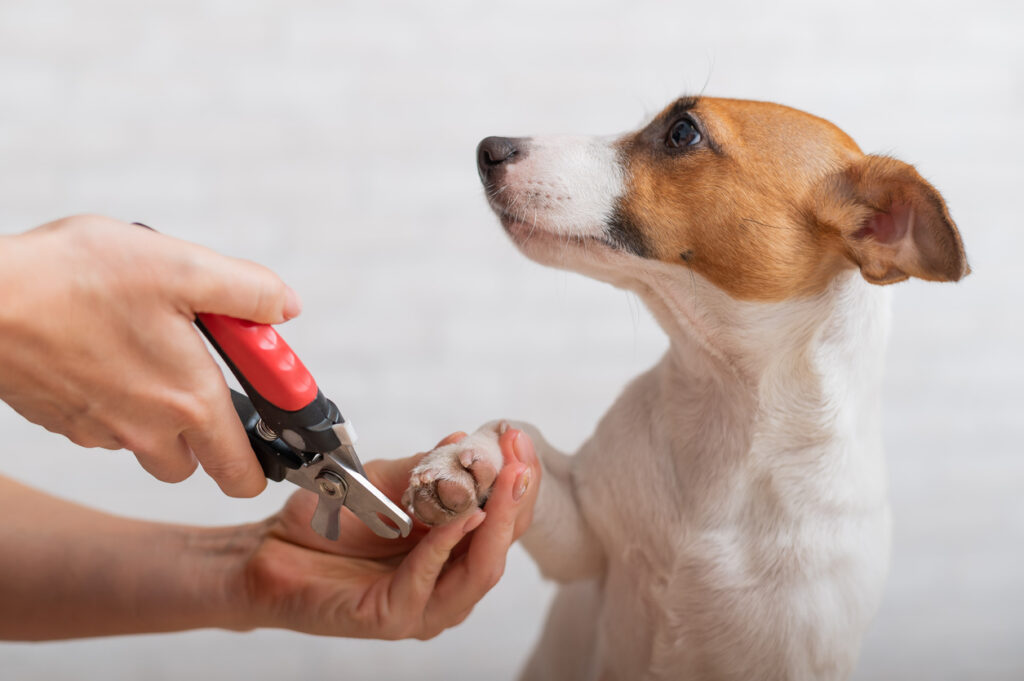How Long Should Dog Nails Be? All About Dog Nail Trimming
When it comes to canine grooming, many dog owners often overlook the importance of trimming their dog’s nails. However, proper nail care is essential to your dog’s overall health and well-being. Dogs’ nails must not get past the paw. Long nails can cause discomfort and pain, and even lead to health issues if left untreated for too long. However, knowing the right length for your dog’s nails can be a bit challenging. In this article, we’ll explore how long dog nails should be, why nail trimming is important, and tips for successful nail trimming.
How Long Should Dog Nails Be?
The ideal length of your dog’s nails will depend on the breed, size, age, and as well as daily activity level, plus the lifestyle of your dog. In general, the nails should be short enough so that they don’t touch the ground when your dog is standing. While walking with your dog on the hard floor and if you hear a clicking sound then it’s a clear sign that their nails are too long and require trimming. Another sign that your dog’s nails are too long is if you can see them curling or bending. Normally, it’s suggested that you trim your dog’s nails every two to four weeks, but some dogs may require more frequent trims, while others may be able to go longer between trims.
It’s important to note that if you’re not sure how long your dog’s nails should be, you should consult with your veterinarian or a professional dog groomer. They can help you determine the right length based on your dog’s specific needs.
Why is Nail Trimming Important?
Nail trimming is not just about keeping your dog’s nails looking good. It’s also essential to their overall health and well-being. Long nails can cause a variety of problems, including:
Pain and discomfort
When your dog’s nails are too long, they can put pressure on the toe joint, causing pain and discomfort.
Difficulty walking
Long nails can affect your dog’s ability to walk properly, leading to balance issues and mobility problems.
Infections
If your dog’s nails are too long, they can break or split, which can lead to infections.
Damaged furniture and flooring
Long nails can scratch and damage your furniture and flooring.
Behavioral problems
If your dog’s nails are too long, it may be more likely to develop behavioral problems, such as aggression or anxiety.
Tips for Successful Nail Trimming
Trimming your dog’s nails can be a daunting task, but with the right tools and technique, it can be a quick and easy process. Here are some tips for successful nail trimming:
Use the right tools
Make sure you have the right tools for the job, including a pair of sharp nail clippers and a styptic powder to stop any bleeding if you accidentally cut the quick.
Find a convivial spot
Select a spot where your dog is comfortable and where there is proper lighting so you can easily see the nails.
Get your dog used to nail trimming
At first, it’s necessary to familiarize your dog with the nail-cutting process so it could be a positive experience for him. Start by touching your dog’s paws and nails regularly, so they get used to the sensation. Reward them with treats and praise to create a positive association.
Grip your dog’s paw
Gently hold your dog’s paw and use your fingers to separate the toes, exposing the nails.
Identifying the quick
The quick is the pink area inside the nails that contains the blood vessels and nerves. It’s important to avoid cutting the quick. If your dog has dark nails and you are unable to see the trim, trim the nails a little bit at a time until you see a white or gray oval shape in the center of the nail. That’s the beginning of the quick.
Cut the nails at an angle
Cut the nail at a 45-degree angle to avoid cutting the quick vein using the clippers. If the dog’s nails are long, then you may need to trim them in several sessions.
Don’t forget the dewclaws
Many dogs have dewclaws, which are located on the inner side of their front legs. These nails should also be trimmed regularly.
Take it slow
If your dog is anxious or nervous, take the process slowly. Only trim a few nails at a time, and reward them with treats and praise throughout the process.
Know when to stop
If your dog is showing signs of discomfort or pain, stop the nail trimming session and try again another time.
Repeat for all nails
Repeat the process for all of your dog’s nails, one paw at a time.
Check for bleeding
If you cut the quick by mistake and your dog’s nail starts bleeding, use the styptic powder or cornstarch to stop the bleeding.
Clean up
After you’ve finished trimming your dog’s nails, clean up any nail clippings and reward your dog with extra playtime or cuddles.

When to Consult with a Professional for Guidance
You should take your dog to a veterinarian or a professional dog groomer for nail trimming if you are uncomfortable or inexperienced with trimming your dog’s nails, or if your dog has particularly long, thick, or dark nails that make it difficult to see the quick. Additionally, you should seek professional help if your dog is anxious, aggressive, or uncooperative during nail trimming, as this can increase the risk of injury to you or your dog. Some other reasons you may need to take your dog to a professional are listed below.
Medical conditions
If your dog is suffering from a medical condition that affects the nail like a nail infection or bleeding disorder, it’s important to visit the vet for a nail trim.
History of nail problems
If your dog has a history of nail problems, such as ingrown nails veterinarian is a better option to handle their nail trimming to prevent further issues.
Nails are overgrown
If your dog’s nails are significantly overgrown and you are unaware of how to trim them safely and effectively, you must visit a groomer professional or vet.
You want to ensure a stress-free experience
If you want to ensure that your dog has a stress-free nail trimming experience, a veterinarian or professional groomer may be able to provide sedation or use specialized techniques to help keep your dog calm and comfortable during the process.
Conclusion
In conclusion, proper nail care is essential to your dog’s overall health and well-being. Long nails can cause pain, discomfort, infections, and even behavioral problems. Regular nail clipping and knowledge of your dog’s ideal nail length can help prevent these problems. By using the right tools and techniques and taking it slow, you can make nail trimming a positive experience for both you and your furry friend.
If you’re looking for a veterinarian to help with your dog’s nail trims near Wayne, New Jersey, North Jersey Animal Hospital is here to help. Give us a call today at (973) 595-8600, or Request an Appointment Online today!




